Faucet sanitary ware, a cornerstone in both residential and commercial plumbing, marries practicality with style, evolving to meet contemporary demands for sustainability and innovation. As industry trends shift towards eco-conscious designs, the integration of touchless technology and the use of durable materials like brass and stainless steel have become pivotal. These advancements reflect a growing consumer interest in both functionality and aesthetics. However, the complexities of choosing the right faucet extend beyond design and material, involving considerations of global standards and certifications. What are these standards, and how do they influence the market choices?
Faucet sanitary ware encompasses the fixtures specifically designed for water control in bathrooms, kitchens, and utility areas, representing a critical subset of the broader sanitary ware category. Unlike general sanitary ware, which includes components such as toilets and basins, faucets serve the distinct function of regulating water flow and temperature, integrating both mechanical precision and aesthetic design. In modern plumbing and interior design, faucets play a pivotal role, blending functionality with style to enhance user experience and complement architectural aesthetics.
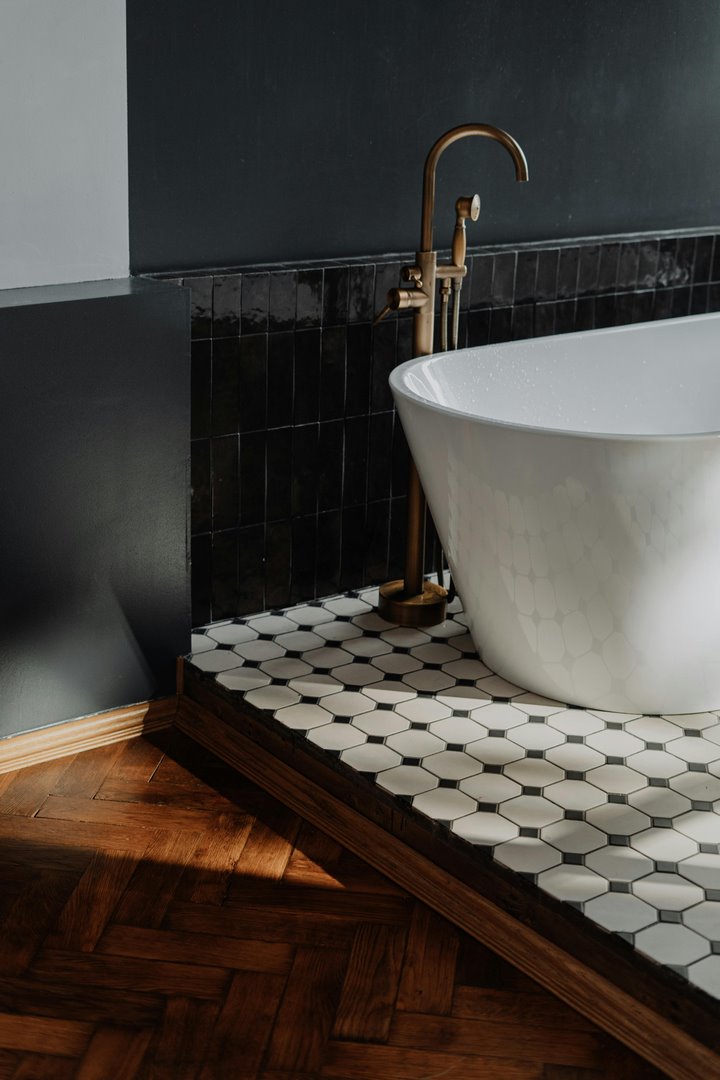
Incorporating both functionality and design, faucet sanitary ware refers to the fundamental fixtures utilized in bathrooms, kitchens, and utility areas, serving as vital components of the larger sanitary ware category. These fixtures, crafted with precision and advanced technology, guarantee efficient water management while complementing the aesthetic of the space. Modern faucets are engineered with eco-friendly features aimed at reducing water consumption, thereby promoting sustainability. Innovative designs continue to emerge, offering sleek aesthetics and enhanced utility, from touchless operations to thermostatic controls.
Faucet maintenance tips are essential for prolonging the lifespan of these fixtures. Regular cleaning with mild, non-abrasive cleaners and routine checks for leaks or corrosion are recommended practices. This guarantees peak performance and prevents unforeseen water wastage.
The following table highlights the key aspects of faucet sanitary ware:
| Aspect | Importance | Example Features |
| Functionality | Efficiency in water usage | Aerators, sensor-operated taps |
| Design | Enhancing visual appeal | Minimalist, ergonomic designs |
| Eco-friendly Features | Sustainability | Low-flow restrictors |
| Innovative Designs | Advanced utility | Touchless technology |
| Maintenance Tips | Longevity and performance | Regular cleaning, leak checks |
This blend of design, functionality, and eco-consciousness underscores the integral role of faucets in modern sanitary ware systems.
While faucets are integral components within the sanitary ware category, they serve distinct roles compared to other fixtures like toilets and basins. Faucets primarily function as flow control devices, regulating water temperature and pressure through faucet technology advancements. In contrast, toilets and basins are stationary fixtures designed for waste management and water containment, respectively. The evolution of faucet design trends has led to innovations such as touchless sensors and water-saving aerators, setting them apart from the more static design of general sanitary ware.
Faucet technology advancements focus on efficiency and user interaction, with features that enhance convenience and reduce water usage. In contrast, toilets and basins prioritize durability and ease of cleaning. The materials and finishes used in faucets, such as brushed nickel or chrome, often reflect current design trends, offering aesthetic options that complement various interior styles. Meanwhile, general sanitary ware typically uses ceramic or vitreous china for durability and hygiene.
Proper faucet maintenance tips emphasize regular cleaning and inspection to prevent mineral buildup and maintain peak function. Unlike toilets and basins, which require different maintenance protocols, faucets demand attention to their moving parts and mechanisms to maintain performance and longevity.
The integration of faucet sanitary ware in modern plumbing systems and interior design represents an essential intersection of functionality and aesthetics. As the industry progresses, faucet innovation trends have become pivotal in defining the contemporary bathroom and kitchen environments. Cutting-edge designs incorporate advanced materials and technologies, guaranteeing that faucets are not only aesthetically pleasing but also highly functional.
Plumbing technology advancements have revolutionized the capabilities of faucet systems, introducing features such as touchless operation, precision temperature control, and water-saving aerators. These innovations enhance user convenience while aligning with eco-friendly designs that prioritize resource conservation. For instance, modern faucets often include low-flow technology, reducing water usage without compromising performance, essential for sustainable living.
In interior design, faucets serve as focal points, blending seamlessly with diverse styles, from minimalist to luxurious. The selection of finishes—such as brushed nickel, matte black, or polished chrome—enables designers to achieve cohesive aesthetics that complement surrounding elements. Additionally, the ergonomic design considerations guarantee that faucets not only enhance visual appeal but also offer user-friendly operation. Ultimately, the role of faucet sanitary ware in modern plumbing and design embodies a harmonious blend of technological sophistication and artistic expression.
In the domain of sanitary ware, faucets are designed to cater to diverse applications and preferences, each characterized by its unique functionality and form factor. Basin faucets, available in single-hole, wall-mounted, and sensor variations, are engineered for specific installation types, while kitchen faucets feature innovations such as pull-out, pull-down, and swivel spouts to enhance usability. Additionally, the market offers bathtub and shower mixers in both manual and thermostatic options, alongside specialized solutions like bidet faucets and the increasingly popular touchless or smart faucets, each providing distinct advantages in modern bathroom environments.
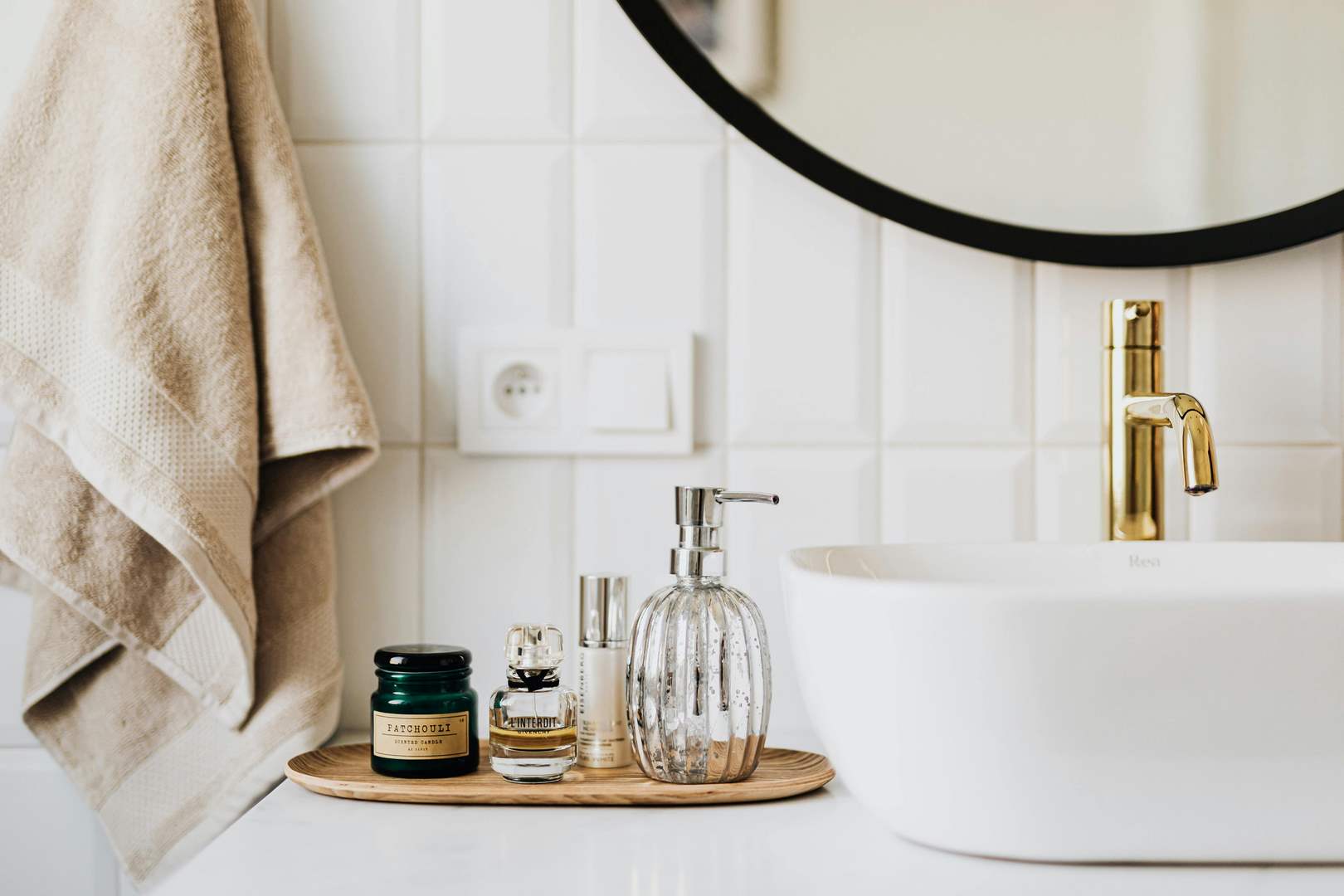
Basin faucets play a significant role in sanitary ware, offering both functionality and aesthetic appeal. These fixtures are integral in bathroom design, with single-hole, wall-mounted, and sensor variations providing diverse options for different requirements. Single-hole faucets are compact and efficient, featuring a single lever for easy water flow and temperature control. Their streamlined design is ideal for minimalist aesthetics and simple installation procedures, as outlined in detailed faucet installation guides.
Wall-mounted faucets, by contrast, are installed directly onto the wall, freeing up counter space and offering a modern, sleek appearance. This type requires precise plumbing arrangements, making careful adherence to a faucet installation guide essential for proper alignment and leak prevention. Meanwhile, sensor faucets, heralded for their innovative faucet designs, utilize infrared technology to enable touchless operation, promoting hygiene and water conservation.
Proper maintenance is important for the longevity of basin faucets. Regular cleaning and inspection can prevent water flow issues and extend the lifespan of these fixtures. Faucet maintenance tips recommend periodic checks for leaks, mineral buildup, and ensuring all moving parts are well-lubricated. Such diligence not only preserves the faucet's function but also maintains its visual appeal within the bathroom environment.
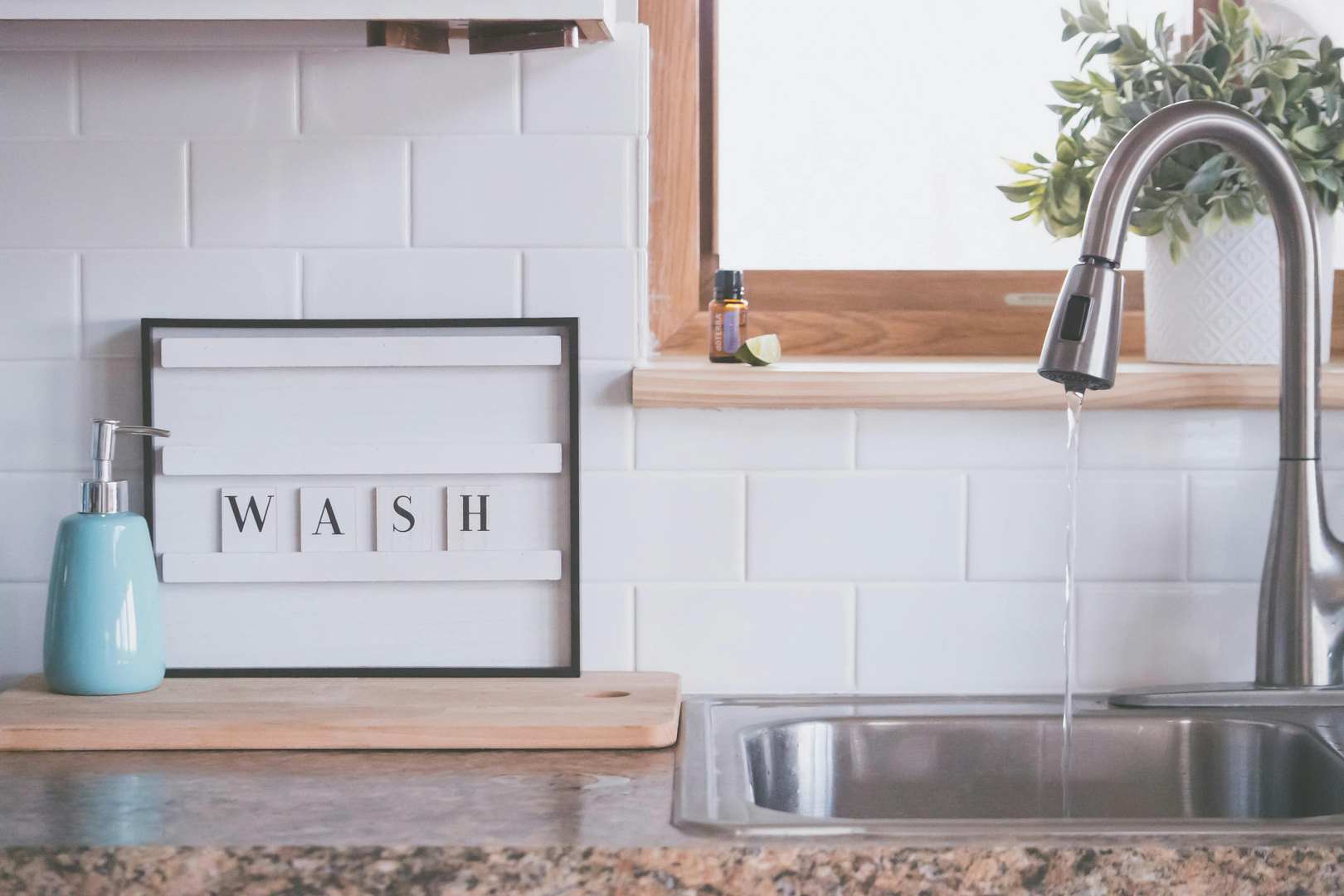
When it comes to kitchen faucets, the choice between pull-out, pull-down, and swivel spouts hinges on both functionality and user convenience, each offering distinct benefits suited to varying kitchen needs. Pull-out faucets feature a compact spray head that extends from the spout, making them ideal for kitchens with limited space. They are particularly effective in cleaning dishes and reaching awkward angles, aided by a flexible hose. Conversely, pull-down faucets are characterized by high-arc spouts, allowing for improved clearance and a downward spray, perfect for filling large pots.
Swivel spouts, often integrated with either pull-out or pull-down models, provide remarkable maneuverability, rotating a full 360 degrees to cater to multiple sink areas. The effectiveness of these systems can be influenced by water pressure effects, necessitating regular faucet maintenance tips to guarantee peak performance. Techniques such as descaling and aerator cleaning are vital for maintaining consistent flow and preventing blockages.
Proper faucet installation techniques are essential to assure seamless operation and longevity. Securing connections and appropriate alignment will mitigate leaks and enhance water pressure. Selecting the appropriate faucet type, combined with diligent maintenance, guarantees a versatile and efficient kitchen workspace.
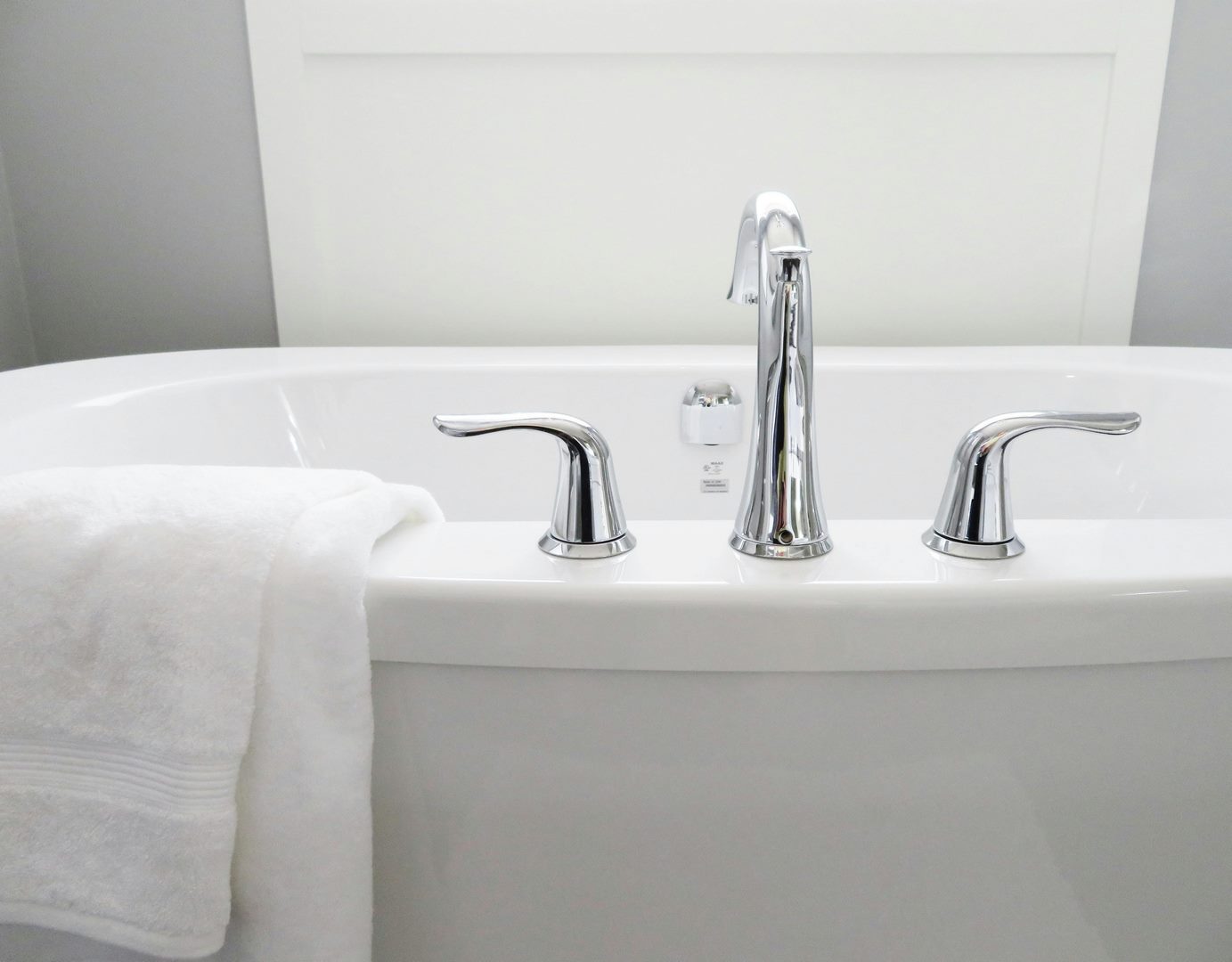
Among the essential components of modern sanitary ware, bathtub and shower mixers stand out due to their critical role in regulating water temperature and flow. These mixers are primarily available in two configurations: manual and thermostatic. Manual control mixers require users to adjust the flow and temperature by manipulating separate hot and cold water handles or a single lever. While they provide a straightforward mechanism, achieving precise temperature stability can be challenging, potentially compromising user safety, particularly in environments with fluctuating water pressure.
In contrast, thermostatic mixers are equipped with advanced mechanisms that automatically adjust the water temperature to a pre-set level, even if the incoming water pressure changes. This guarantees consistent temperature stability, enhancing user safety by minimizing the risk of sudden scalding or chilling. Thermostatic mixers are equipped with temperature sensors and safety stops, often set at 38°C, which can be overridden for higher temperatures if needed.
While manual mixers are typically more economical and simpler in design, thermostatic mixers offer enhanced functionality and safety features. The choice between manual and thermostatic mixers should consider user preference, budget constraints, and the specific installation environment to guarantee ideal performance and safety in daily use.
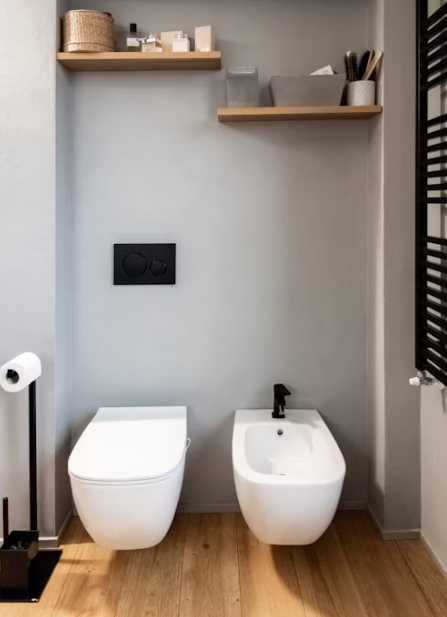
Bidet faucets, an essential component of modern sanitary ware, come in a variety of designs that cater to different functional and aesthetic requirements. These faucets enhance personal hygiene by providing a precise water stream for cleansing, thereby offering notable bidet benefits over traditional methods. Common types include single-hole and widespread bidet faucets, each engineered for specific installation configurations. Single-hole faucets are compact and easy to install, ideal for smaller bidets, while widespread models provide greater flexibility in placement, suitable for larger fixtures.
In terms of installation tips, it is vital to guarantee compatibility with the bidet's pre-drilled holes and to secure a watertight seal using appropriate gaskets and plumber's tape. Confirming proper alignment of hot and cold water lines is necessary to avoid leaks and maintain ideal temperature control.
Maintenance guidelines for bidet faucets involve regular cleaning to prevent mineral buildup, particularly in areas with hard water. It is advisable to use mild, non-abrasive cleaners and a soft cloth to maintain the finish and functionality of the faucet. Periodic inspection of aerators and seals helps in prolonging the lifespan of the faucet, assuring consistent performance and reliability.

Touchless and smart faucets represent a considerable advancement in sanitary ware technology, offering enhanced convenience and hygiene. These innovative fixtures leverage smart technology innovations to provide an intuitive and seamless user experience. At the core of their functionality is an advanced sensor system that detects hand movements, automatically activating the water flow without the need for direct contact. This touchless operation considerably reduces the risk of cross-contamination, making them ideal for both residential and commercial applications where hygiene is paramount.
The user interface design of smart faucets is engineered for accessibility and efficiency. Many models feature digital displays or mobile app connectivity, allowing users to customize settings such as water temperature and flow rate with precision. This customization not only enhances user comfort but also optimizes the faucet's performance to align with energy efficiency standards, reducing water wastage and operational costs.
Furthermore, smart faucets often integrate with home automation systems, offering features such as voice activation and usage monitoring. These elements not only contribute to a modern and sophisticated kitchen or bathroom environment but also promote sustainable water usage. By incorporating cutting-edge technology with innovative design, touchless and smart faucets set a new standard in sanitary ware functionality.
In the domain of faucet manufacturing, material selection is pivotal to guaranteeing both performance and longevity. Brass remains a preferred choice due to its exceptional durability and resistance to corrosion, while stainless steel offers a hygienic and eco-friendly alternative with a modern appeal. Additionally, zinc alloy provides a cost-effective solution for entry-level options, ceramic cartridges guarantee leak-proof operation, and diverse surface finishes like chrome, matte black, and brushed nickel, including advanced PVD coatings, enhance aesthetic versatility and durability.
Brass's prominence in faucet manufacturing is largely due to its exceptional durability and resistance to corrosion. This non-ferrous metal comprises primarily copper and zinc, forming various brass alloys tailored to specific applications. In faucets, lead-free brass alloys are often preferred, guaranteeing compliance with modern health and safety standards. The inherent strength of brass minimizes wear and tear, extending the lifespan of sanitary fixtures considerably.
Brass finishes play an essential role in the aesthetic and functional appeal of faucets. Polished brass offers a timeless, elegant look that enhances traditional and contemporary decor, while brushed or satin brass provides a more subdued, modern appearance. These finishes not only contribute to the visual appeal but also add an additional layer of protection against environmental factors, enhancing the material's resilience.
Brass maintenance is relatively straightforward, requiring regular cleaning to preserve its finish and performance. A simple routine involving mild soap and water is typically sufficient to prevent tarnishing and maintain its luster. For persistent stains or oxidation, a non-abrasive brass cleaner can be used. By adhering to these maintenance practices, homeowners can guarantee that their brass faucets remain in pristine condition, maintaining both functionality and aesthetic allure.
Stainless steel stands out in the domain of faucet manufacturing due to its unparalleled hygienic properties and modern aesthetic. Its non-porous surface resists bacterial build-up, guaranteeing a sanitary environment. This material's sleek, reflective finish contributes to modern aesthetics, aligning seamlessly with contemporary interior designs. The incorporation of stainless steel into faucets not only enhances visual appeal but also underscores a commitment to eco-friendly materials.
| Feature | Description | Benefit |
| Hygienic Properties | Non-porous surface resists bacteria | Guarantees sanitary conditions |
| Modern Aesthetics | Sleek, reflective finish | Enhances visual appeal |
| Eco-Friendly Materials | Recyclable and sustainable | Reduces environmental impact |
| Durability | Resistant to corrosion and tarnish | Guarantees longevity |
Stainless steel benefits extend beyond hygiene and aesthetics. Its durability, characterized by resistance to corrosion and tarnish, guarantees longevity, making it a cost-effective choice over time. This material's eco-friendly nature, being fully recyclable, reduces environmental impact while supporting sustainability initiatives. The combination of these features makes stainless steel a preferred choice for manufacturers and consumers alike, offering a harmonious balance of functionality, style, and environmental consciousness in faucet production. This amalgamation of modern design with practical advantages positions stainless steel as a leading material in the sanitary ware industry.
While stainless steel dominates the premium segment of faucet manufacturing with its hygienic and aesthetic advantages, zinc alloy emerges as a cost-effective alternative for the entry-level market. Known for its affordability, zinc alloy is a composite material primarily consisting of zinc and often mixed with small amounts of aluminum, magnesium, and copper to enhance its properties. This makes it a viable option for manufacturers targeting consumers who prioritize budget without compromising basic functionality.
Zinc alloy durability is a considerable advantage, particularly when considering its resistance to corrosion and tarnishing. Although it may not match the longevity of stainless steel, zinc alloy faucets offer satisfactory performance in environments subject to moderate wear and tear. The material's ability to undergo die casting allows for intricate designs, making it versatile in zinc alloy applications across various faucet models.
Zinc alloy finishes can be manipulated to provide an appealing visual aspect. Common finishes include chrome plating, which not only enhances the faucet's appearance but also adds an extra layer of protection against corrosion. Other finishes such as brushed nickel may also be used to match differing aesthetic preferences. To summarize, zinc alloy serves as a pragmatic choice for cost-sensitive markets.
Guaranteeing ideal leak-proof performance in faucets is heavily reliant on the use of ceramic cartridges. These components are integral to the precise control of water flow and temperature, offering a robust solution against leaks. Ceramic discs within the cartridge are engineered to create a tight seal, effectively minimizing wear and tear, thereby extending the cartridge lifespan. The longevity of ceramic cartridges depends on several factors, including water quality, frequency of use, and proper installation techniques.
Correct cartridge installation methods are critical to avoid premature failure. It is essential to confirm that the cartridge is correctly aligned and securely seated within the faucet body. Any misalignment can lead to leaks or reduced functionality. Regular maintenance is also crucial; cartridge maintenance tips include periodic cleaning to remove mineral buildup and confirm smooth operation.
Understanding cartridge lifespan factors aids in prolonging the efficiency of the faucet system. High mineral content in water can accelerate wear, necessitating more frequent maintenance. By adhering to recommended maintenance schedules and employing proper installation methods, the durability and performance of ceramic cartridges can be maximized, guaranteeing consistent leak-proof functionality over time.
Surface finishes play a pivotal role in both the aesthetic appeal and functional durability of faucet sanitary ware. Chrome, known for its reflective finish, provides a high-gloss appearance that enhances any bathroom or kitchen setting. This surface is not only visually striking but also offers robust resistance to corrosion and wear. For those seeking innovative designs, matte black finishes present a modern alternative. This option is particularly favored for its ability to conceal water spots and fingerprints, reducing the frequency of cleaning, a key aspect in faucet maintenance tips.
Brushed nickel offers a warm, textured surface that complements a variety of interior styles. This finish is less likely to show wear and tear, ensuring longevity. Additionally, its non-reflective quality makes it an eco-friendly option by minimizing cleaning product use. Finally, Physical Vapor Deposition (PVD) coatings provide a superior finish through a vaporization process that deposits a thin film onto the faucet surface. The result is an exceptionally hard, scratch-resistant coating that greatly extends the lifespan of the faucet.
Incorporating these surface finishes, manufacturers can create a diverse range of products that align with consumer demands for both style and environmental responsibility.
The faucet sanitary ware industry is witnessing a significant transformation driven by technological advancements and consumer preferences. The adoption of smart and sensor faucets is rising, particularly in commercial sectors, while there is a growing demand for water-saving and eco-certified products that align with sustainability goals. Additionally, the market is increasingly favoring matte black and brushed finishes, emphasizing touchless, hygienic operations, and embracing modular and minimalist design aesthetics in response to post-COVID hygiene concerns.
Transforming the commercial sector, smart and sensor faucets have emerged as pivotal innovations in faucet sanitary ware, driven by technological advancements and increasing demands for sustainable solutions. The integration of smart technology into these faucets enhances operational efficiency and user convenience. Advanced sensor mechanisms enable touchless operation, minimizing contact points, thereby reducing the risk of contamination—a critical feature in high-traffic commercial settings such as airports, hospitals, and corporate offices.
User experience design is at the forefront of these innovations, focusing on intuitive interfaces that allow seamless user interactions. This design approach guarantees that the faucets are accessible and user-friendly, accommodating diverse user needs while maintaining aesthetic appeal. The incorporation of adaptive sensor technologies guarantees maximum water flow and temperature control, enhancing the overall user satisfaction.
Energy efficiency solutions are another key aspect, as these faucets are engineered to enhance water usage, contributing to significant energy savings. By employing precision sensors and flow regulators, smart faucets minimize water wastage and reduce operational costs, aligning with the sustainability goals of modern commercial environments. This technological leap not only fortifies the hygiene standards but also underscores a commitment to eco-conscious practices in the commercial sector.
Across global markets, an increasing preference for water-saving and eco-certified products in faucet sanitary ware is reshaping industry standards. This trend is driven by heightened consumer awareness regarding environmental impact and a shift towards sustainable materials. The integration of water-efficient technologies, such as low-flow aerators and sensor-activated systems, not only curtails water usage but also aligns with eco-certifications, providing tangible benefits for both users and the environment.
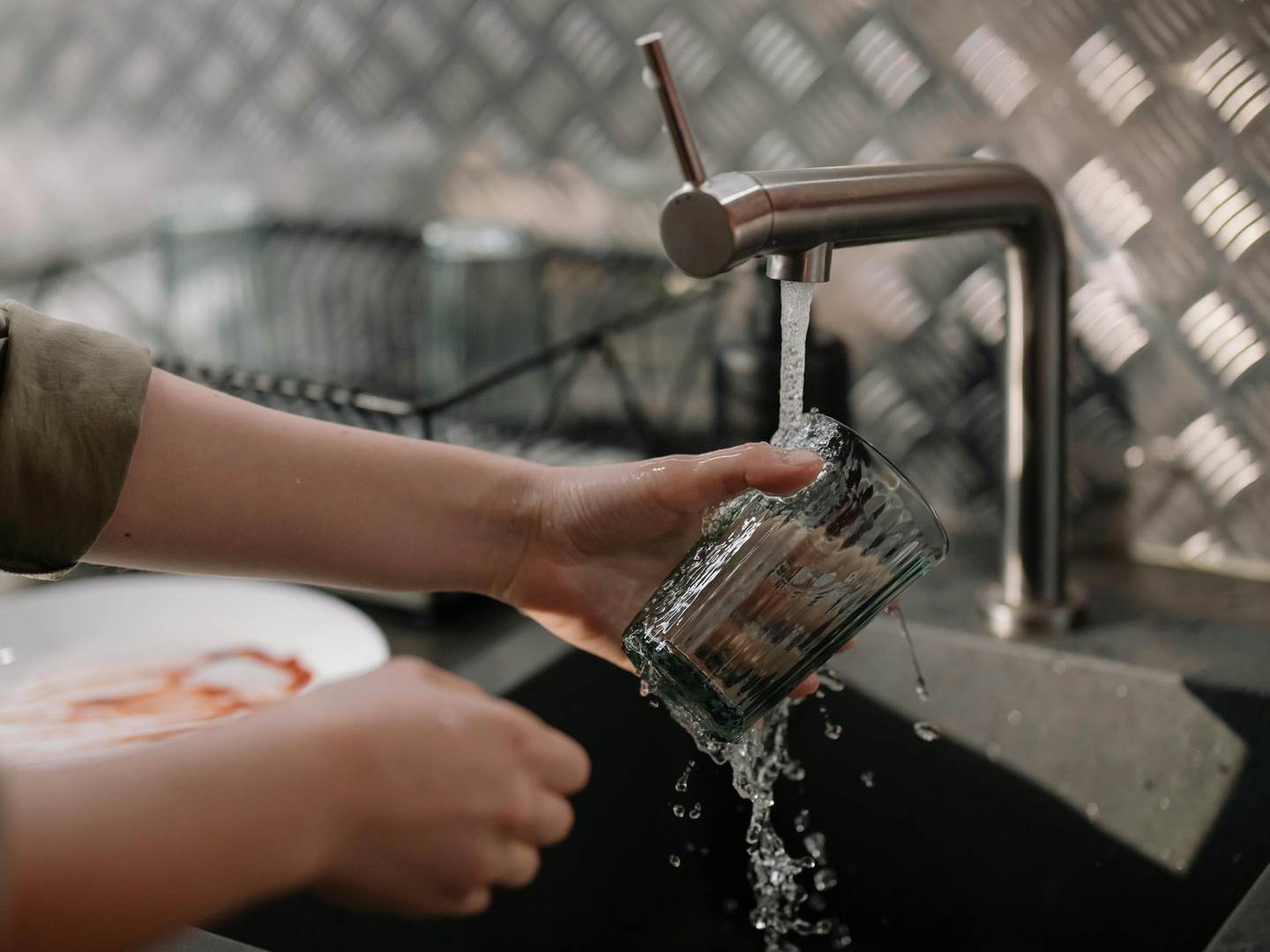
Manufacturers are increasingly adopting sustainable materials, such as recycled metals and eco-friendly finishes, to meet these growing demands. This shift is supported by rigorous eco-certification processes that assess a product's lifecycle, from raw material extraction to disposal, ensuring minimal environmental impact.
As this trend continues, the faucet sanitary ware industry is poised to innovate further, emphasizing sustainability and efficiency.
Aesthetic sophistication is driving a notable surge in demand for matte black and brushed finishes within the global faucet sanitary ware market. These finishes, characterized by their subdued elegance and modern appeal, are increasingly favored for their ability to complement a wide range of color palette preferences in residential and commercial settings. The matte finishes trend, marked by its velvety texture and non-reflective surface, offers a contemporary aesthetic that enhances the visual intrigue of any bathroom or kitchen space. This trend is particularly popular among consumers seeking minimalist design elements that emphasize clean lines and understated elegance.
Brushed textures appeal to those who prioritize durability and maintenance ease alongside aesthetic considerations. The brushed finish, achieved through a process of texturing the metal surface with fine, parallel lines, not only resists fingerprints and watermarks but also provides a tactile, sophisticated feel. This finish is especially attractive in high-traffic areas where both functionality and style are paramount.
As these finishes gain traction, manufacturers are responding by expanding their collections to include a wider variety of matte and brushed options, thereby catering to the evolving demands for innovative and stylish faucet solutions in the global market.
The heightened awareness of hygiene, a byproduct of the COVID-19 pandemic, has accelerated the adoption of touchless faucet technology in the sanitary ware industry. This trend underscores a significant shift towards hygienic innovations, where minimizing physical contact is paramount. Touchless technology, activated through sensors, reduces the risk of cross-contamination, offering a cleaner, more sanitary user experience. These faucets, now a staple in post pandemic design, are equipped with advanced infrared sensors that detect hand movement, ensuring water flow without the need for manual operation.
Key attributes of touchless faucets incorporate several technological advancements:
These developments in touchless faucet technology reflect an industry-wide commitment to health and safety. By integrating these systems into modern sanitary ware, manufacturers are responding to consumer demands for products that align with new health-conscious behaviors and expectations, ensuring a safer environment in both public and private spaces.
Building upon the industry's focus on hygiene and touchless technology, current trends in faucet sanitary ware are increasingly embracing modular and minimalist design aesthetics. This evolution is driven by the demand for streamlined, functional, and visually unobtrusive fixtures that complement contemporary bathroom environments. Modular aesthetics in faucet design allow for customizable components that can be individually tailored to suit specific spatial requirements and user preferences. This flexibility supports sustainable practices by enabling the replacement or updating of individual parts without the need for complete fixture overhauls.
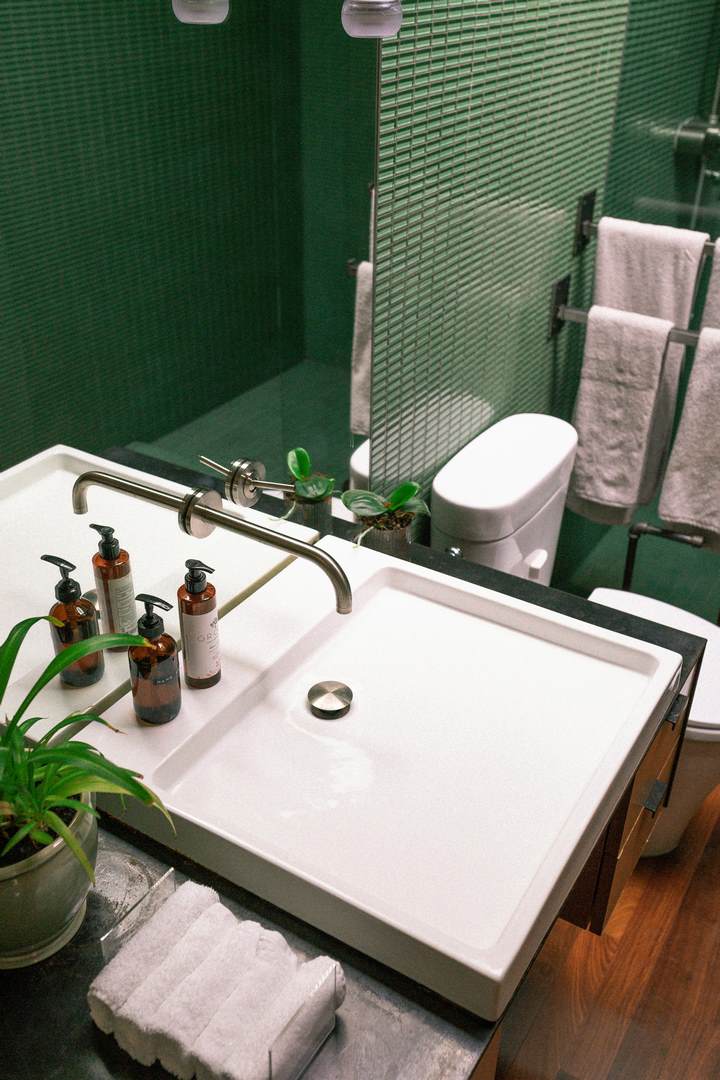
Minimalist trends focus on reducing visual clutter, emphasizing simplicity and functionality. Faucets with clean lines, smooth surfaces, and muted color palettes are at the forefront of this design innovation. The integration of advanced materials, such as PVD-coated finishes and high-grade stainless steel, enhances both the durability and aesthetic appeal of these fixtures. Additionally, the incorporation of smart technology within minimalist designs guarantees that the functionality is not compromised, offering features such as digital temperature controls and water-saving mechanisms.
When evaluating faucet sanitary ware, it is vital to take into account quality certifications such as CE, WRAS, CUPC, WaterSense, WELS, and NSF, as these standards guarantee compliance with stringent safety, performance, and environmental criteria. The importance of lead-free compliance is particularly emphasized in Europe and North America, where regulations mandate low lead content to protect public health. Additionally, rigorous testing and quality control protocols are essential for facilitating global trade, assuring that products meet international specifications and consumer expectations.
Maneuvering the intricate landscape of faucet sanitary ware requires a keen understanding of various quality certifications and standards, such as CE, WRAS, CUPC, WaterSense, WELS, and NSF. These certifications are essential in guaranteeing faucet sustainability and compliance with faucet regulations. The CE mark, prevalent in the European Economic Area, certifies that faucets adhere to vital safety and environmental protection requirements, promoting faucet innovations that align with regional guidelines.
The Water Regulations Advisory Scheme (WRAS) is significant in the UK, guaranteeing that water fittings do not pose a threat to public health or waste water. CUPC (Uniform Plumbing Code) certification in North America assures compliance with plumbing standards, focusing on performance and material safety. WaterSense, a U.S. Environmental Protection Agency program, identifies products that meet water efficiency criteria, directly contributing to sustainable water use.
In Australia, the Water Efficiency Labelling and Standards (WELS) scheme helps consumers make informed choices about water-efficient products. NSF International certification guarantees products meet strict public health standards.
Understanding the landscape of faucet sanitary ware certifications naturally leads to an examination of lead-free compliance, a critical consideration in Europe and North America. The adoption of stringent lead free regulations in these regions underscores the importance of addressing health implications associated with lead exposure. In North America, the Reduction of Lead in Drinking Water Act mandates that plumbing products, including faucets, must not exceed a weighted average lead content of 0.25% across wetted surfaces. This regulatory framework aligns with industry standards such as NSF/ANSI 372, which certifies components as lead-free.
In Europe, the European Drinking Water Directive sets forth similar stringent requirements, emphasizing the need for manufacturers to adhere to lead content restrictions in materials contacting potable water. This directive is pivotal in mitigating the health risks posed by lead, known to cause severe neurological and developmental issues, especially in children.
Industry standards serve as the backbone of lead-free compliance, guiding manufacturers in production processes and material selection. Compliance guarantees consumer safety and aligns with global market expectations, fostering trust and credibility. Therefore, understanding and implementing lead-free regulations is imperative for manufacturers aiming to succeed in these competitive markets.
In the domain of global trade, rigorous testing and quality control (QC) protocols are indispensable for guaranteeing that faucet sanitary ware products meet international quality certifications and standards. These protocols are critical to maneuvering import regulations, adapting to market trends, and aligning with consumer behavior. Testing guarantees that products withstand durability requirements and comply with health and safety standards. QC processes can include material testing, functional performance assessments, and compliance certification, all designed to minimize product failures and enhance reliability.
International standards such as ISO 9001 and specific certifications like NSF/ANSI 61 for drinking water systems are pivotal. They guarantee that products meet stringent safety and performance criteria, which are essential for market acceptance and consumer trust.
Key considerations in testing and QC protocols include:
Incorporating these practices guarantees that faucet sanitary ware products are ready for successful integration into the global market.
Selecting the appropriate faucet sanitary ware for your market involves ensuring compatibility with local plumbing systems to optimize functionality and compliance. It is essential to evaluate consumer preferences regarding design aesthetics, finish options, and functional attributes, while also considering the congruence of faucet styles with various basin and countertop designs. Additionally, comprehending installation methodologies and aligning with customer expectations for after-sales support can greatly enhance user satisfaction and brand loyalty.
A essential step in choosing the appropriate faucet sanitary ware for any market is to meticulously match product types with the specific requirements of local plumbing systems. Understanding regional plumbing standards and infrastructure is fundamental to guaranteeing compatibility and functionality. This entails a thorough assessment of water pressure levels, pipe dimensions, and installation methodologies. By aligning faucet innovations with these parameters, manufacturers can offer solutions that enhance plumbing sustainability and optimize design ergonomics for both residential and commercial applications.
To achieve this alignment, consider the following significant factors:
Prioritizing these considerations guarantees that the selected faucet sanitary ware not only meets local plumbing specifications but also supports sustainable and ergonomic design principles.
When diving into the selection process of faucet sanitary ware, it is vital to factor in consumer preferences relating to design, finish, and function to guarantee market success. Understanding consumer trends is significant, as these preferences evolve with lifestyle changes and technological advancements. Design preferences often revolve around contemporary aesthetics, where sleek lines and minimalist forms dominate the market. However, traditional styles with intricate detailing remain popular among certain demographics, necessitating a diverse product offering.
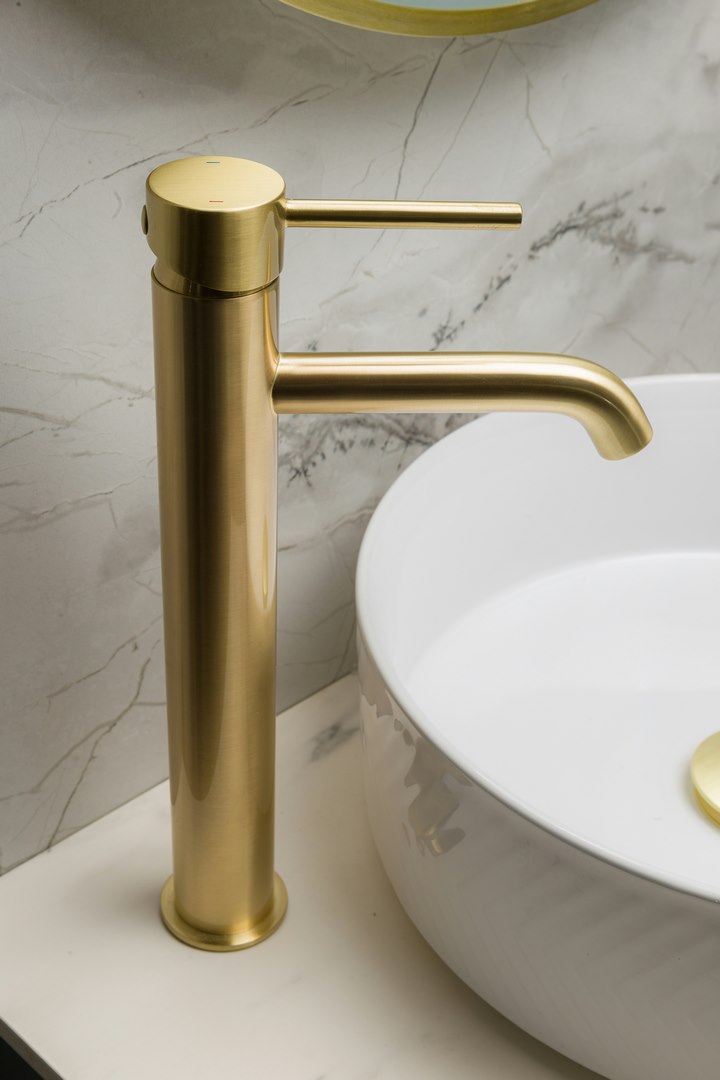
The finish of a faucet plays a significant role in consumer decision-making, as it influences the overall look and feel of a bathroom or kitchen. Popular finishes include chrome, brushed nickel, and matte black, each offering distinct aesthetic and maintenance advantages. Chrome's reflective quality adds a modern touch, while brushed nickel's subtlety appeals to those seeking understated elegance. Matte black, on the other hand, provides a bold, contemporary contrast in various interior styles.
Functionality features are increasingly pivotal, with consumers prioritizing faucets that offer water efficiency, ease of use, and technological integration. Touchless operation, pull-out sprayers, and adjustable spray patterns are sought-after features that align with current consumer trends, emphasizing the need to balance style with innovative functionality in product offerings.
Understanding consumer preferences for design, finish, and function is only part of the process in choosing the right faucet sanitary ware. Equally significant is ensuring faucet styles are compatible with basin designs and countertop materials. This compatibility is essential to achieve a cohesive aesthetic and functional bathroom or kitchen space, where mismatches can lead to installation challenges or a disjointed appearance.
When evaluating basin compatibility, consider the dimensions and the mounting type of the basin. Wall-mounted basins may require different faucet styles than countertop-mounted options. Additionally, the spout reach and height should align with the basin's depth to prevent splashing or inadequate water flow.
Countertop materials also influence faucet selection. For instance, thicker materials, such as stone or composite, may necessitate longer faucet shanks for proper installation. In addition, the visual harmony between faucet finishes and countertop textures should not be overlooked, as it contributes to the overall design cohesion.
Key considerations include:
Selecting the right installation method for faucet sanitary ware is essential for guaranteeing both functionality and aesthetic appeal in kitchen and bathroom spaces. Various installation techniques—such as deck-mounted, wall-mounted, or freestanding—require specific plumbing configurations and tools. Each method presents distinct installation challenges, necessitating a detailed understanding of the underlying infrastructure and compatibility with existing plumbing systems. Proper alignment and secure mounting are critical to prevent leaks and guarantee a seamless integration with basins and countertops.
In addition to the technical aspects, after-sales support is a pivotal consideration. High-quality customer service should offer extensive installation guides and troubleshooting resources to address common issues that may arise. It is advisable to choose manufacturers that provide robust warranty programs and readily accessible technical support. Such support can greatly ease the burden of maintenance and repair, guaranteeing long-term satisfaction with the product.
Maintenance tips are also integral to the longevity and performance of faucet sanitary ware. Regular cleaning, timely replacement of worn components, and adherence to manufacturer guidelines can prevent common problems such as mineral buildup and corrosion. A well-informed customer can effectively manage these aspects, optimizing both the functionality and durability of their investment.
When sourcing faucet sanitary ware on a global scale, it is vital for buyers to collaborate with suppliers capable of providing OEM/ODM services, ensuring product customization and branding alignment. Requesting samples and technical drawings prior to committing to bulk purchases allows for a thorough examination of product specifications and quality standards. Additionally, evaluating the supplier's production capacity, on-time delivery rates, warranty terms, packaging quality, and logistics support is essential to secure a reliable supply chain and maintain market competitiveness.
Partnering with suppliers that provide OEM (Original Equipment Manufacturer) and ODM (Original Design Manufacturer) services can greatly enhance the product development process in the faucet sanitary ware industry. Leveraging OEM collaboration strategies allows companies to customize faucet designs and specifications, guaranteeing products meet specific market demands. This partnership provides access to advanced manufacturing capabilities, technological expertise, and economies of scale, which are vital for competitive advantage. On the other hand, ODM service benefits include innovative design solutions and faster time-to-market, as suppliers can offer ready-to-use designs that can be quickly adapted to a buyer's brand identity.
Effective supplier relationship management is essential when working with these suppliers. It involves maintaining open communication channels, setting clear performance expectations, and establishing long-term collaboration goals. This relationship guarantees that product quality, delivery timelines, and cost efficiencies are consistently met, aligning with the strategic objectives of both parties.
Careful selection and management of OEM/ODM partners are pivotal for successful market penetration and sustained growth in the faucet sanitary ware sector.
Securing samples and technical drawings before committing to a bulk purchase is an essential step in the procurement process for global buyers in the faucet sanitary ware industry. This practice guarantees that the products meet the required technical specifications and quality standards, thereby mitigating the risks associated with large-scale investments. Sample requests allow buyers to physically assess the product's design, material composition, and functionality, providing a tangible assurance of compliance with industry standards.
Technical drawings, on the other hand, offer detailed insights into the product's dimensions, tolerances, and assembly instructions, forming a critical part of the decision-making process. These documents enable buyers to verify that the supplier's offerings align with the operational requirements and regulatory compliance specific to their market. Additionally, reviewing technical specifications and engineering drawings aids in identifying any potential design modifications necessary to meet unique project needs.
Incorporating sample requests and thorough evaluation of technical drawings into the procurement strategy enhances the decision-making process, guaranteeing that the selected products are not only fit for purpose but also of superior quality. This approach minimizes the risk of discrepancies between initial expectations and the final output in bulk purchasing, thereby safeguarding investment.
Evaluating production capacity and on-time delivery rates is a pivotal aspect of the procurement strategy for global buyers in the faucet sanitary ware sector. Accurate assessment of these factors guarantees that manufacturers can meet demand without compromising quality or delivery schedules. Production efficiency plays a critical role, serving as an indicator of a manufacturer's ability to optimize operations and minimize waste, thereby sustaining consistent output levels. Moreover, a robust supply chain is essential to maintaining timely delivery, guaranteeing that components and materials are available when needed to prevent production delays.
A thorough evaluation involves understanding the manufacturer's inventory management practices. Proper inventory management not only supports production continuity but also equips the supplier to respond to unexpected order fluctuations or supply chain disruptions.
Key considerations include:
When considering warranty terms, packaging quality, and logistics support in the procurement process of faucet sanitary ware, a meticulous evaluation is significant for global buyers. The warranty evaluation should encompass an analysis of the coverage period, service provisions, and claim process efficiency. It's essential to understand the terms that protect against manufacturing defects and guarantee the supplier offers thorough support for replacements or repairs. A robust warranty indicates the supplier's confidence in their product quality.
Packaging standards are another important factor to evaluate. The packaging must adhere to international safety and durability norms to prevent damage during transit. Evaluate whether the materials used can withstand environmental conditions and mechanical strains during transportation. Packaging should also comply with sustainability practices, aligning with global environmental regulations.
Logistics efficiency is critical for maintaining a seamless supply chain. Evaluating logistics support involves examining the supplier's transportation methods, lead times, and their ability to handle customs and documentation requirements. Efficient logistics not only guarantee timely delivery but also minimize costs associated with delays and damages. By prioritizing these factors, buyers can safeguard their investments, guarantee product quality, and maintain operational continuity in the competitive market of faucet sanitary ware.
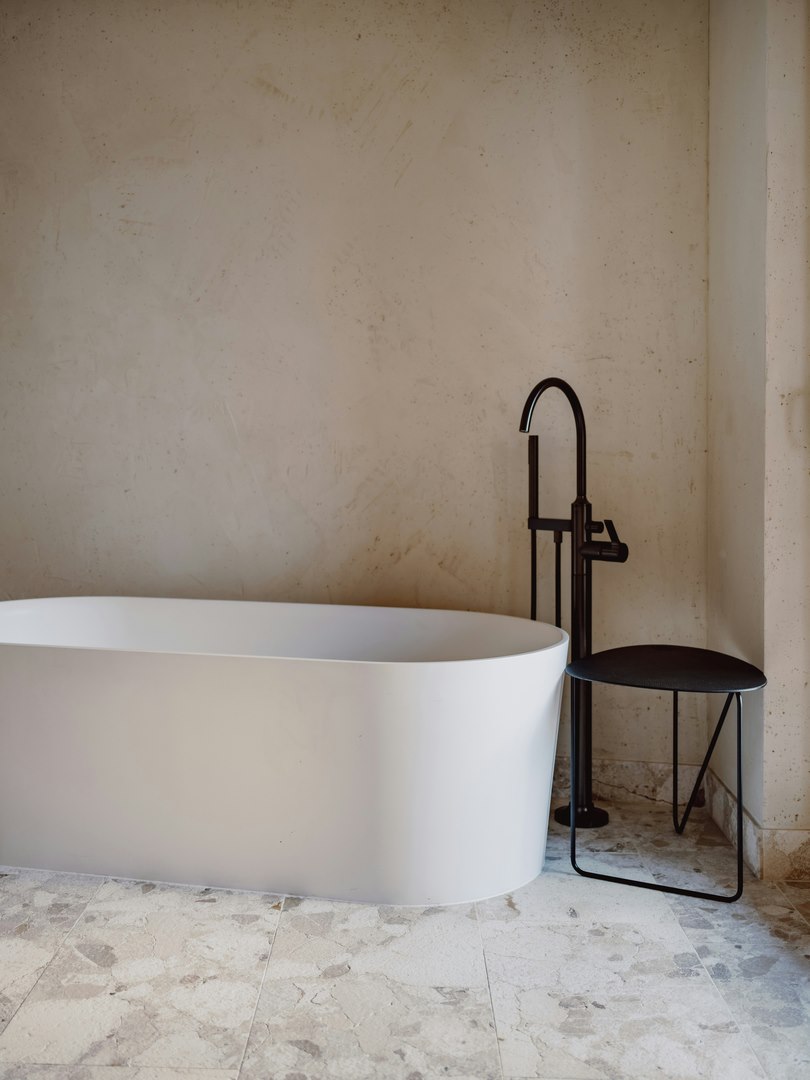
To guarantee your faucet gleams with timeless elegance, select durable faucet materials and employ precise installation techniques. Regularly apply non-abrasive cleaning techniques, gently erasing grime, to maintain its pristine shine and extend its functional longevity.
Common signs of a faulty faucet include persistent faucet leaks, unusual faucet noises such as squeaking or clanking, and the need for frequent faucet repairs. These issues often indicate underlying mechanical failures or worn-out components requiring immediate attention.
Eco-friendly options in faucet sanitary ware include fixtures made from sustainable materials, integrating water-saving features like aerators, and possessing eco certifications. These elements guarantee reduced environmental impact while maintaining functionality and efficiency in water usage.
To reduce water wastage, modern faucets employ water-saving technology, such as faucet aerators and flow rate reduction features. These innovations maintain adequate pressure while considerably decreasing water usage, promoting efficiency and sustainability in residential and commercial applications.
The latest innovations in faucet design include smart faucets with touchless technology, incorporating sensors to detect motion and automatically control water flow. These designs integrate advanced water-saving features, optimizing consumption while maintaining performance and enhancing user convenience and hygiene.